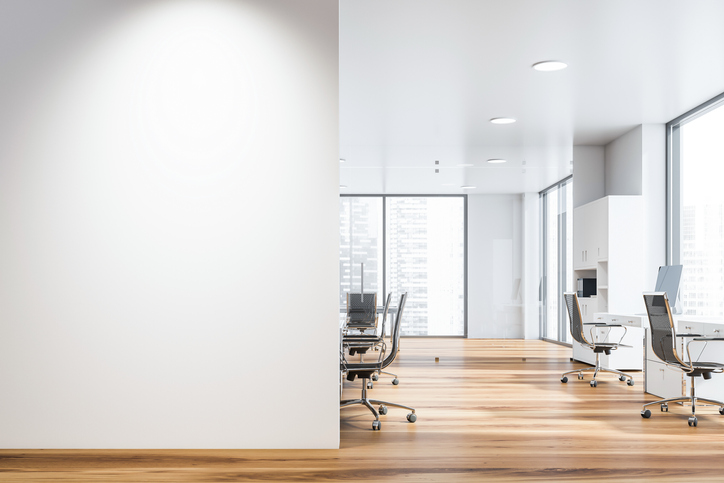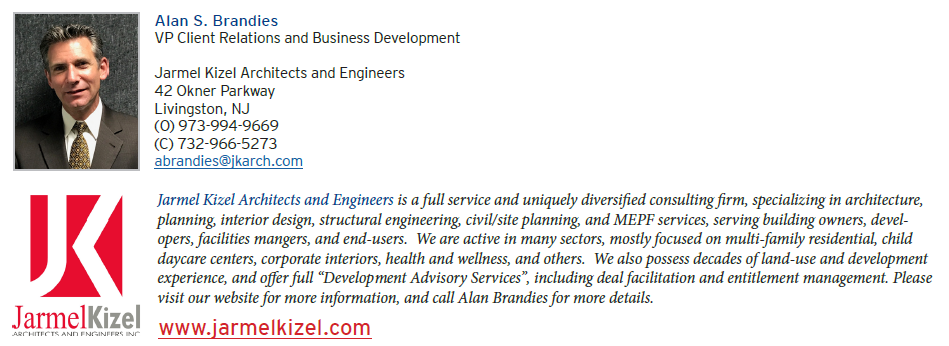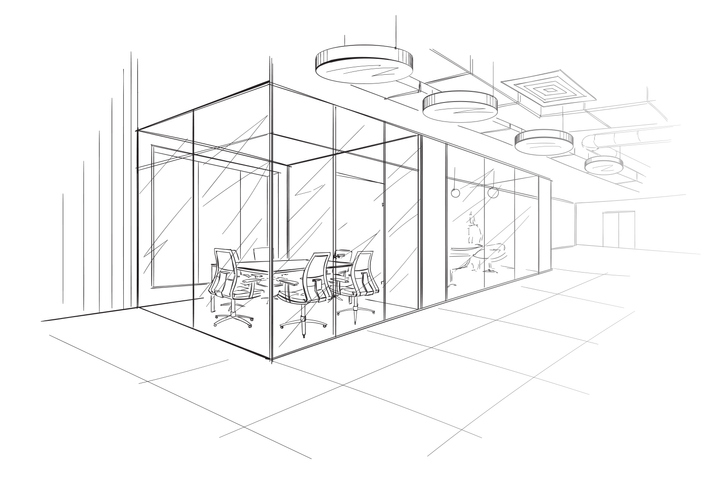 Let’s look at architectural design considerations for a post pandemic world. Are you tired of hearing about the “New Normal”? Do you yearn for the “Old Normal”, or fear that life as we knew it has changed forever? These are legitimate thoughts as we navigate through and beyond this pandemic. The good news is that we are natural survivors, with a long history of staring-down adversity and rising above with resolve, courage, and grace. Even in such extraordinary times, we overcome fear, fight through pain and loss, heal ourselves and our world, and eventually move forward as well or better than when the crisis first began.
Let’s look at architectural design considerations for a post pandemic world. Are you tired of hearing about the “New Normal”? Do you yearn for the “Old Normal”, or fear that life as we knew it has changed forever? These are legitimate thoughts as we navigate through and beyond this pandemic. The good news is that we are natural survivors, with a long history of staring-down adversity and rising above with resolve, courage, and grace. Even in such extraordinary times, we overcome fear, fight through pain and loss, heal ourselves and our world, and eventually move forward as well or better than when the crisis first began.
Download Printable Article (PDF) >>>
Another common saying at times like these is “this too shall pass”. We at Jarmel Kizel Architects and Engineers, Inc. agree, however, it is incumbent upon all of us to first deal with the situation in a safe and vigilant manner, and to do what we can to prevent this from happening again. The reality is, we live in a world of expanding population growth, urban swell, suburban sprawl and frequent international travel, all factors that facilitate the spread of a deadly virus such as COVID-19. Like many of our colleagues throughout the architecture, engineering and planning community, the team at Jarmel Kizel Architects and Engineers, Inc. has been considering strategies that protect our health while helping restore and preserve as many characteristics of the “Old Normal” as
possible. The firm recently conducted a round table video call to discuss how we as design professionals can address the behavioral, physical and technological changes needed to keep our society safe, prevent further spread, and help expedite return to “normalcy”. The topics discussed in this paper are the results of our collective thoughts on this matter, and would be delighted to expand upon them in greater and more technical detail based upon our client’s needs.
Jarmel Kizel Architects and Engineers is active in several industry sectors, but the three most prominent are residential, office/commercial interiors, and education/childcare; all indisputably linked to lifestyles of our fellow Americans. We’re engaged daily in designing buildings and spaces where people live, work, shop, and educate their children. In the context of these specific sectors, this article will explore the behavioral or “humanistic” side of how to better plan for and help prevent similar challenges in the future, and explore the physical and technical considerations that could be implemented to fight and defeat this crisis.
Workplace Design Considerations for a Post Pandemic World
Whether you work in an urban high-rise, suburban office suite, or in a retail location, changes will be obvious as soon as we all return. Office tower workers and visitors will endure delays at security/reception checkpoints and can expect lengthy lines waiting for an elevator. All who work in offices will be required to follow safety guidelines such as social distancing, wearing protective face masks, and submitting to health screening upon entering. Employers will be forced to weigh productivity and efficiency factors against employee safety and wellness.
Many companies have already considered (or are implementing already) the following policies and procedures:
• Adding hand wash and disinfecting stations
• Modifying office, conference room, and workstation configurations to assure adequate distance between staff members
• Placing shields and barriers between workstations
• Limiting use of office pantries and kitchens
• Implementing staggered shifts, 4-day work weeks, and permitting/encouraging work-from-home Encouraging remote videoconferencing in lieu of face-to-face meetings
• Limiting business travel to the best extent possible
• Temperature check / overall health assessment screening at entry
These, and many other operational and “behavioral” safeguards have been discussed via news outlets and various blogs and webinars, and are mostly common-sense. Additionally, workers can be safe-guarded by implementation of technology, much of which is already available:
• Hands-free operational entry doors
• Facial recognition technology
• Clear graphic signage for directions, wayfinding, room capacity, etc.
• Occupancy sensors in office and common spaces
• Voice-activated elevator call commands
• Hands free toilet/urinal flush and touchless lavatory faucet control
• Introducing more outdoor air intake for ventilation systems
• Ultraviolet / germicidal lighting for cleaning and disinfecting of surfaces
• Ultraviolet / germicidal devices in HVAC systems and distribution ductwork
• Use of antiviral surfaces and coatings
Overall design standards for offices can and should be altered to create a higher “area-per-workstation” ratio, and work-benching, hoteling, and shared computer spaces should be greatly reduced or eliminated. Office environments in firms such as ours, where collaboration and cooperation among various disciplines is imperative, must utilize more and more the technology that already exists to share information, share documents, share screens, etc.
Residential Design Considerations for a Post Pandemic World
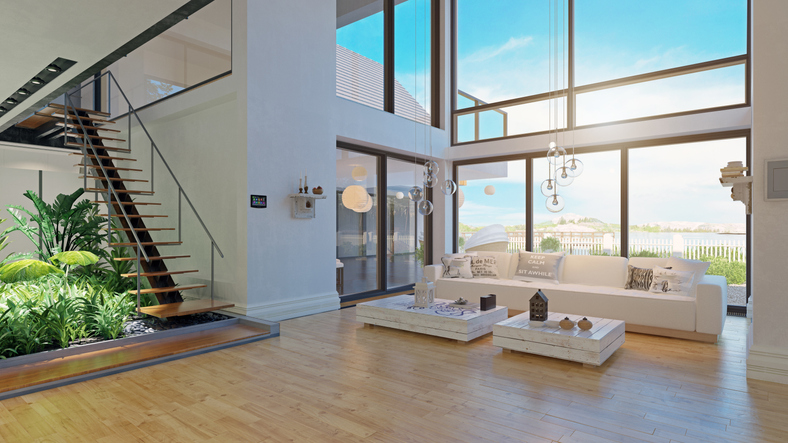 Jarmel Kizel has designed countless multi-family residential projects over its history. We recognize that many reading this paper are more accustomed to single-family home living but certain considerations run consistent regardless of lifestyle. Also, many reading this have some involvement in multi-family residential through business (developers, investors, designers, leasing agents, property managers, etc.). Multi-family residential buildings, whether they be owner-occupied or rental property, share certain inherent concerns with office
Jarmel Kizel has designed countless multi-family residential projects over its history. We recognize that many reading this paper are more accustomed to single-family home living but certain considerations run consistent regardless of lifestyle. Also, many reading this have some involvement in multi-family residential through business (developers, investors, designers, leasing agents, property managers, etc.). Multi-family residential buildings, whether they be owner-occupied or rental property, share certain inherent concerns with office
buildings, especially high-rise, and the same behavioral, operational physical, and technical precautions should be followed.
Some additional residential design considerations considerations are as follows:
• Building maintenance and cleaning must be ramped-up to provide even more protection against viruses.
• Common areas, lobbies, corridors, shared entertainments spaces and others must be utilized with the same social-distancing standards
as utilized in an office environment.
• Amenity areas (fitness rooms, lounges, business centers, community rooms, swimming pools, shared social/entertainment areas, etc.) must be designed or re-designed to foster social distancing, which may include layouts of more building area
• Information Technology must be upgraded to support more and better connectivity for the influx of those working from home
• Design trends must be studied, evaluated, and implemented for any new residential development. Trends may include increased unit size and physical accommodation of work-at-home areas and/or full home offices
• Package/mail delivery and pick-up must be designed with adequate space for the onslaught of on-line shopping deliveries, and to ensure that multiple residents can safely retrieve packages. (Note: This is not a “new trend”, but likely one that will expand due to COVID-19, but not necessarily change back once the pandemic is behind us)
High-rise and “urban” multi-family residential buildings will likely require more expensive systems and costly retrofit for the same reasons as high-rise office buildings. Primary reasons for this include limited points of entry, security/concierge check-in, and need to utilize elevators within social-distancing guidelines.
Educational Building Design Considerations for a Post Pandemic World
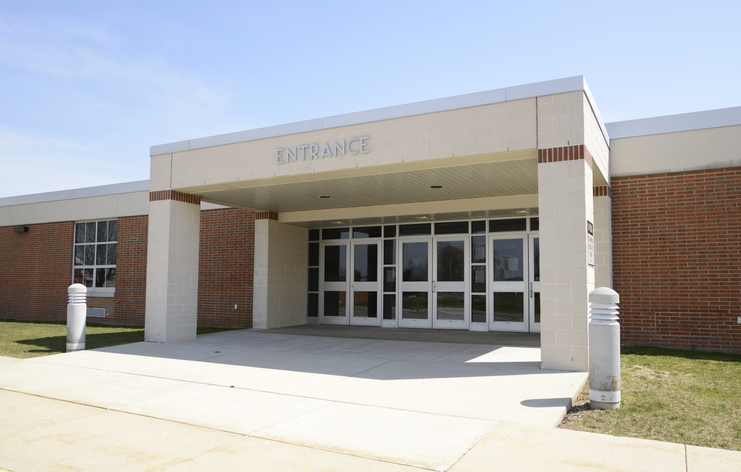 Jarmel Kizel Architects and Engineers is very active in the design of educational facilities, and has designed hundreds of child daycare centers across the country, for many of the known national brands. Although COVID-19 has proven to be less interested in youngsters than their parents and grandparents, protecting these precious boys and girls is an obvious necessity. This industry sector is different than others mentioned because operations are linked not only to building codes, but also to licensing requirements on a state-level. Even as restrictions
Jarmel Kizel Architects and Engineers is very active in the design of educational facilities, and has designed hundreds of child daycare centers across the country, for many of the known national brands. Although COVID-19 has proven to be less interested in youngsters than their parents and grandparents, protecting these precious boys and girls is an obvious necessity. This industry sector is different than others mentioned because operations are linked not only to building codes, but also to licensing requirements on a state-level. Even as restrictions
have been lifted to a large extent, it is unknown how many students and staff will be permitted in the building at any given time.
Operational and behavioral considerations are fairly obvious, including distancing of the youngsters from each other, vigilantly cleaning and disinfecting surfaces, and “eye-balling” boys and girls for potential symptoms. Some less obvious operational safeguards include the manner by which parents/guardians are permitted to enter buildings for pick-up and drop-off.
Many of the physical and technical considerations are similar to the aforementioned building uses, with a few industry-specific design considerations:
• Designing centers with more bathrooms to allow for less sharing of common facilities
• Addition of spaces dedicated for sanitizing teaching materials and toys
• Use of sterilization machines, where toys, books, pillows, blankets, etc. can be placed and sterilized overnight and when school is not in session
• Automation via voice activation and occupancy sensors, similar to those proposed for offices.
• Use of Ultra-violet and germicidal lighting, as proposed for office spaces.
Behavioral and technological recommendations for Child Daycare and Early Child Development should be consistent in “K-12” grade level school buildings as well.
CONCLUSION
Americans are outgoing and socially engaging by nature, and our culture has been deeply impacted by the voracity and spread of the COVID-19 virus. Many of us know someone who has suffered from it, or has even died, but we must focus our attention now on protection, prevention, and adaptation to the “post-COVID” way of life. If we continue to adhere to prescribed guidelines and common-sense, and the architectural and engineering community leads the way with innovative approaches to design, the virus AND its aftermath can soon be in our rearview mirrors, and the “New Normal” could become substantially similar to the “Old Normal”. We at Jarmel Kizel wish you and yours the best of health during this crisis, and always.
For More Information Contact


